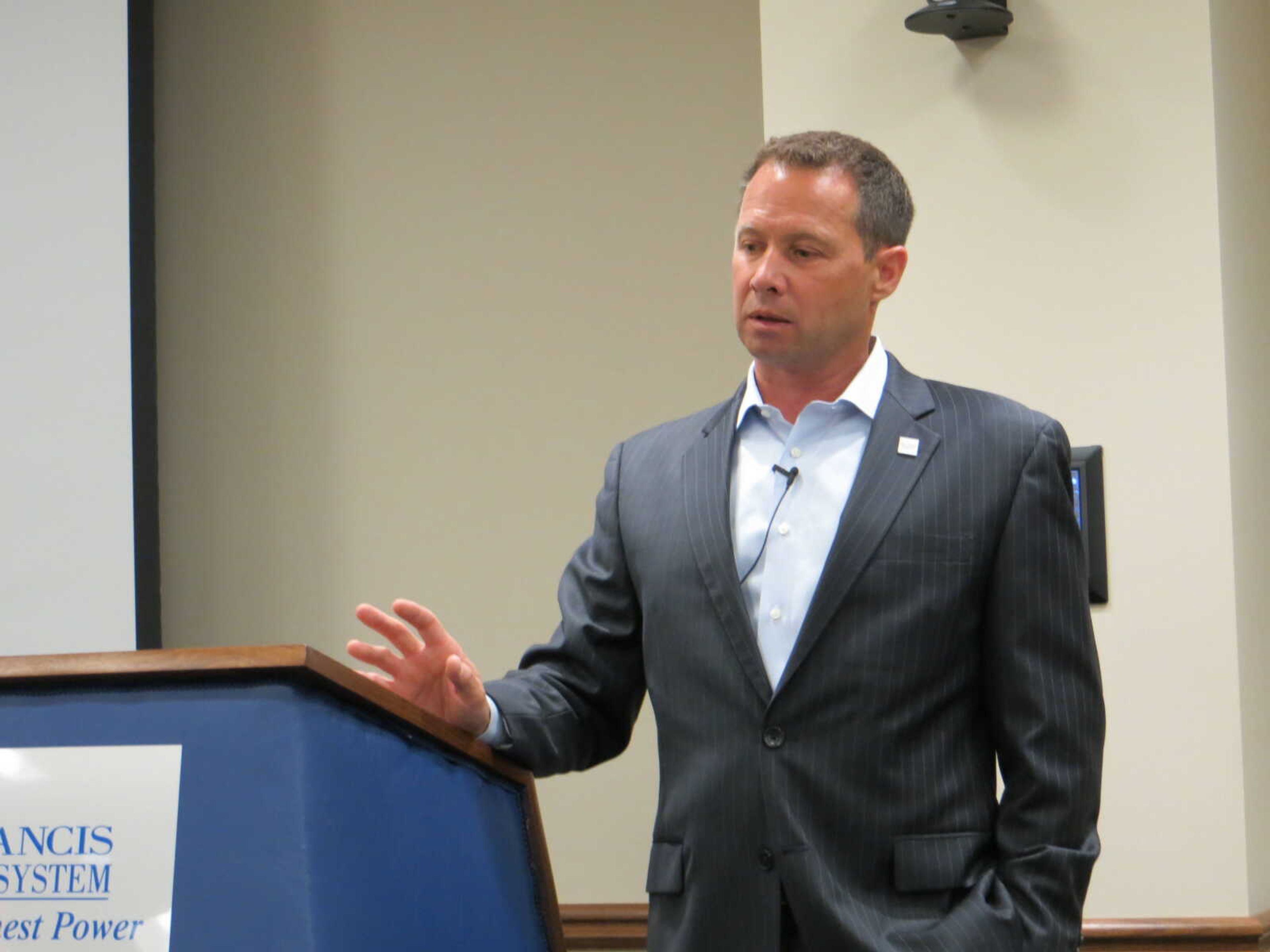Orlando hospital official tells of experiences after Pulse nightclub shooting
Last summer, David Strong, president and CEO of Orlando Health, and his hospital faced the aftermath of the worst mass shooting in modern American history that occurred three blocks from their campus. On Wednesday, he shared what he learned from the Pulse nightclub shooting with leaders at Saint Francis Medical Center in Cape Girardeau...
Last summer, David Strong, president and CEO of Orlando Health, and his hospital faced the aftermath of the worst mass shooting in modern American history that occurred three blocks from their campus.
On Wednesday, he shared what he learned from the Pulse nightclub shooting with leaders at Saint Francis Medical Center in Cape Girardeau.
“It’s a story that I get emotional about,” he said.
He called the experience a milestone for his hospital and for himself.
“Think of your facility at 2:04 a.m. on a Sunday,” he said.
That’s when the calls began coming in June 12, 2016.
The injured came in waves, Strong said. First, two patients, then 10 and so on, until Orlando Regional Medical Center had 44 shooting victims from the nightclub.
The hospital’s last mass-casualty drill had been in March, Strong said, which helped. He suggested drills be done with the utmost seriousness and without regard to external factors.
“We don’t do paper drills anymore,” he said. “You do ’em when you’re busy.”
That’s because being busy won’t keep a real tragedy from happening.
And drilling will only go so far, he said, because an actual tragedy is peppered with ground-level quirks.
Strong recalled several such quirks, including how one group of doctors celebrated their graduations the Friday before the shooting. When paged, several thought the reports of mass casualties were a hoax, and they had to be convinced they weren’t being hazed before reporting to the hospital.
He said the difficulty of identifying victims was compounded because some of them used fake IDs to enter the club.
Others were undocumented immigrants. The hospital’s interpreters struggled to keep up, he said.
While the sheer volume of injured was stressful, Strong recalled asking a nurse whether he could do anything to help.
“Gotta get rid of these cellphones,” she told him, explaining their constant ringing as relatives tried to contact victims was growing unbearable.
But Strong said the things they could prepare for worked wonders. The hospital’s incident-command team fell back on its procedures, which were conceived largely to respond to hurricanes.
Surgeons administered 550 units of blood in the immediate aftermath of the shooting. Two hundred units went into a single patient. A typical person has seven units in his or her body.
But the hospital didn’t run out of blood, Strong said. Nor did it run out of chest tubes or anything else.
After the worst had passed, he said dealing with media outlets and even the outpouring of gifts became unforeseen obstacles.
“The world sent us things,” he said, recalling pallets of water bottles, stacks and stacks of pizzas and makeshift memorials erected on the hospital campus.
Hospital officials had to decide how long to let the memorials stand. They eventually held a ceremony to donate parts of them to Orlando’s historical society.
In the end, 49 people were killed and 53 wounded in the attack.
Of the 35 victims who made it to the hospital alive, all survived, Strong said.
The hospital held the victims’ hospital bills and later waived them — $5.5 million in all.
“The magnitude of this was horrific,” Strong said.
But his parting advice centered around diligence, optimism and hope.
“You need stories of hope,” he said.
tgraef@semissourian.com
(573) 388-3627
Connect with the Southeast Missourian Newsroom:
For corrections to this story or other insights for the editor, click here. To submit a letter to the editor, click here. To learn about the Southeast Missourian’s AI Policy, click here.










